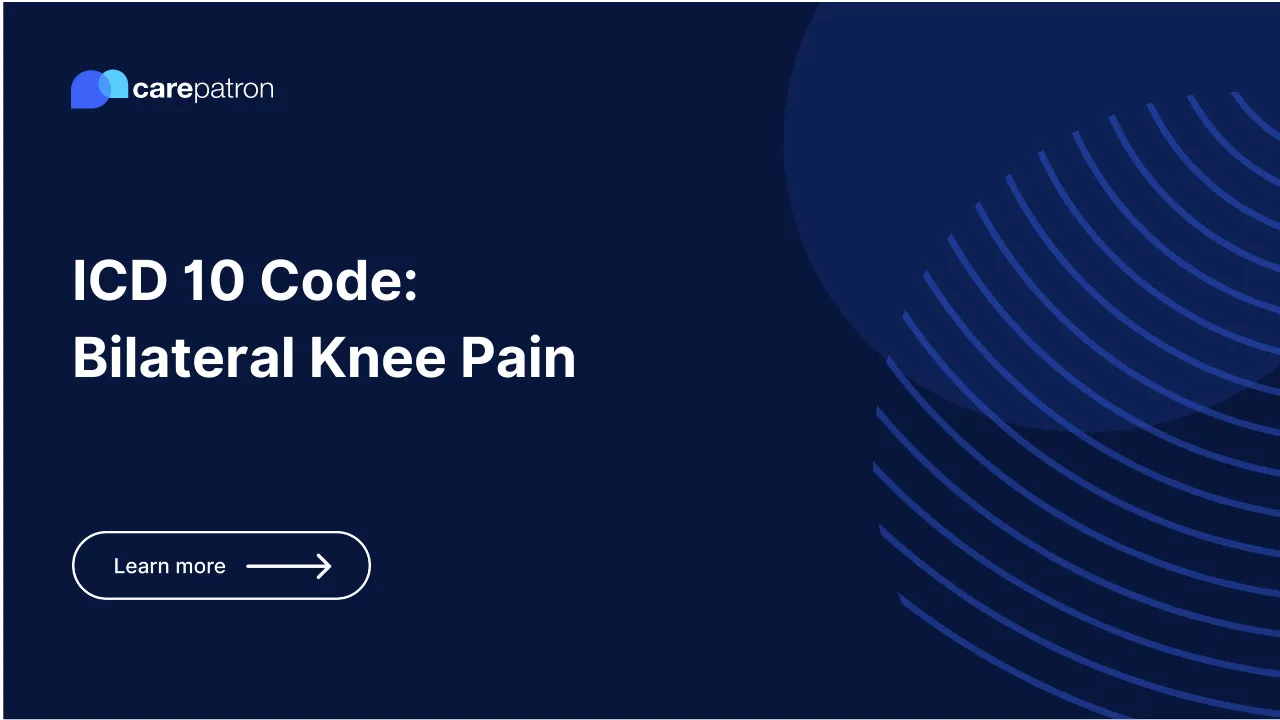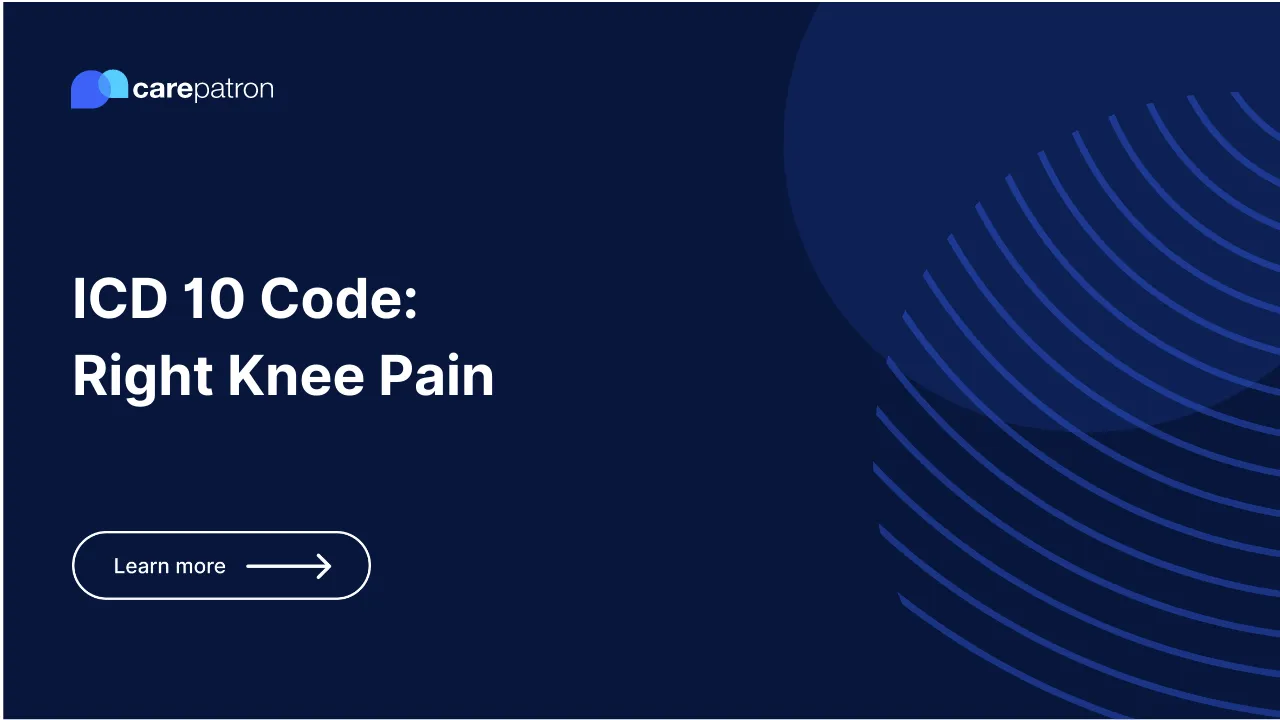Chronic Low Back Pain ICD-10-CM Codes
Learn about the ICD-10 Codes Used for Chronic Low Back Pain. This includes information on symptoms, medications, treatment, and more.

What ICD-10 Codes are Used for Chronic Low Back Pain
Here are some of the commonly used Chronic Low Back Pain ICD Codes.
M54.50
This code diagnoses lower back pain and chronic bilateral low back pain without sciatica ICD associated with any other condition. Various factors, such as stress, poor posture, or an underlying medical condition, can cause this type of pain. It is worth mentioning that on October 1, 2021, the code was replaced with the following codes:
M54.51
This code is used to diagnose lower back pain that is caused by a problem with the spine, such as a herniated disc, spinal stenosis, or arthritis. This type of pain can be chronic and debilitating.
M54.59
The ICD-10-CM code M54.59 is used to diagnose low back pain that does not fit into any of the other more specific codes for low back pain. It can be used for adults of all ages and does not require any modifiers.
S39.012
Low back strain. This code is used to diagnose a strain of the muscles, tendons, or ligaments in the lower back. It is often caused by lifting something heavy, twisting suddenly, or sitting for long periods. This type of injury can be painful and make it difficult to move around.
M51.2
Lumbago due to intervertebral disc displacement. This code is used to diagnose lower back pain caused by a herniated disc. A herniated disc is a condition where part of the disc between two vertebrae slips out of place and presses on a nerve. This can cause pain, numbness, and tingling in the back and legs.
M54.4
Lumbago with sciatica. This code is used to diagnose lower back pain that is accompanied by sciatica. Sciatica is a pain that radiates down the back of one or both legs. It is caused by pressure on the sciatic nerve, which is a major nerve that runs from the lower back down the back of each leg. This can be a very painful condition that can make it difficult to walk or stand.
Which Chronic Low Back Pain ICD codes are Billable:
The codes mentioned are valid ICD 10 chronic low back pain codes that can be used for billing purposes.
Clinical Information
- Chronic low back pain is characterized by prolonged pain in the lower back lasting more than 12 weeks.
- It affects approximately 80% of individuals at some point in their lives.
- The pain can range from mild to severe and may be constant or intermittent. It can also radiate to the buttocks, legs, or feet.
- Common causes of chronic low back pain include degenerative spine changes, muscle strain, spinal injuries, structural irregularities, and certain medical conditions like arthritis or osteoporosis.
- Diagnosis involves a thorough physical examination, medical history assessment, and imaging tests to rule out other potential causes.
- While no definitive cure exists, various treatments are available to alleviate pain and improve functionality.
- In rare cases, treatment options include medication, physical therapy, injections, and surgery.
- The primary goal of treatment is to reduce pain and enhance functionality, allowing individuals to resume normal activities.
Commonly asked questions
The ICD 10 codes chronic low back pain should be used when a patient has pain in the lower back that has lasted for more than 12 weeks.
Yes, chronic low back pain diagnoses are billable. The ICD 10 codes for chronic low back pain can be used to reimburse healthcare providers for the diagnosis and treatment of this condition.
Medications such as over-the-counter pain relievers, muscle relaxants, and anti-inflammatory drugs can relieve pain and inflammation. Physical therapy can help to improve flexibility, strength, and range of motion in the lower back.
Injections of steroids or pain medication can also help to relieve pain and inflammation. Surgery is rarely necessary for chronic low back pain. Still, it may be considered in cases where other treatments have not been effective or where a structural abnormality in the spine causes the pain.







.webp)
.webp)
.webp)
.webp)
.webp)
.webp)
.webp)
.webp)
.webp)
.webp)
.webp)
.webp)
.webp)
.webp)
.webp)
.webp)
.webp)
.webp)
%2520(1).webp)
.webp)
.webp)
.webp)
.webp)
.webp)
.webp)
.webp)
.webp)
.webp)
.webp)
.webp)
.webp)
.webp)
.webp)
.webp)
%2520(1).webp)
.webp)
.webp)
.webp)
.webp)
.webp)
.webp)
.webp)
.webp)
.webp)
.webp)
.webp)
.webp)
.webp)
.webp)
.webp)
.webp)
.webp)
.webp)
.webp)
.webp)
.webp)
.webp)
.webp)
.webp)
.webp)
.webp)
.webp)
.webp)
.webp)
.webp)
.webp)
.webp)
.webp)
.webp)

.webp)
.webp)
.webp)
.webp)













.webp)
.webp)




.webp)


